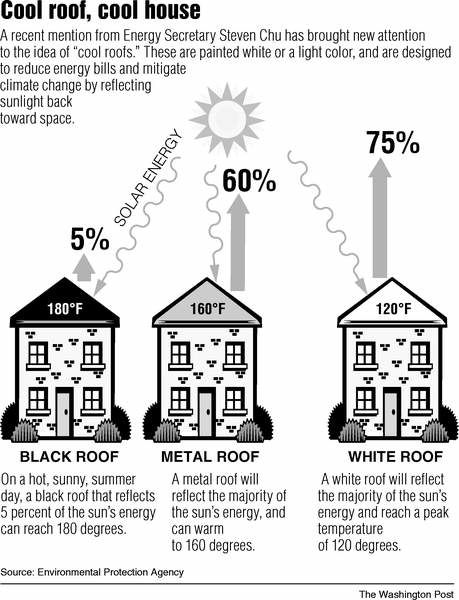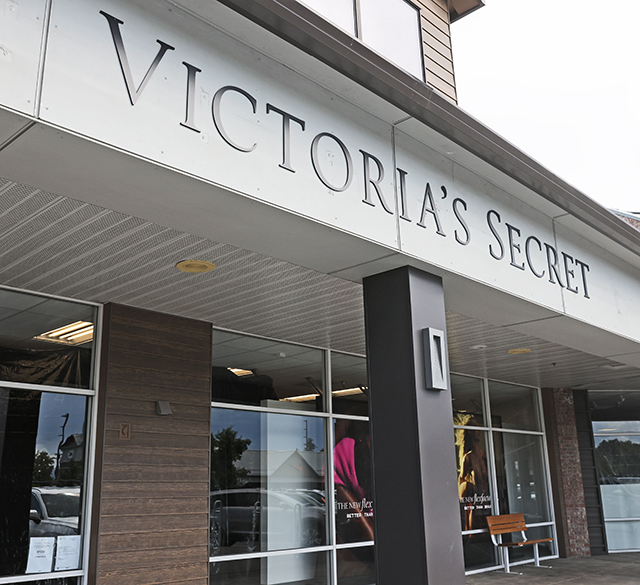Saving energy with white roofs: Whens it make sense?
Published 5:00 am Saturday, August 1, 2009

- Addressing climate change from the rooftops (literally)
SAN FRANCISCO Returning to their ranch-style house in Sacramento after a long summer workday, Jon and Kim Waldrep were routinely met by a wall of heat.
Wed come home in the summer and the house would be 115 degrees, stifling, said Waldrep, a regional manager for a national company. He or his wife would race to the thermostat and turn on the air-conditioning as their four small children, just picked up from day care, awaited relief.
Trending
All that changed last month. Now we come home on days when its over 100 degrees outside, and the house is at 80 degrees, Waldrep said.
Their solution was a new roof: a shiny plasticized white covering that experts say is not only an energy saver but also a way to help cool the planet.
Relying on the centuries-old principle that white objects absorb less heat than dark ones, homeowners like the Waldreps are in the vanguard of a movement embracing cool roofs as one of the most affordable weapons against climate change.
Studies show that white roofs reduce air-conditioning costs by 20 percent or more in hot, sunny weather. Lower energy consumption also means fewer of the carbon-dioxide emissions that contribute to global warming.
What is more, a white roof can cost as little as 15 percent more than its dark counterpart, depending on the materials used, while slashing electricity bills.
Energy Secretary Steven Chu, a Nobel laureate in physics, has proselytized for cool roofs at home and abroad. Make it white, he advised a television audience on Comedy Centrals Daily Show last week.
Trending
The scientist Chu calls his hero, Art Rosenfeld, a member of the California Energy Commission who has been campaigning for cool roofs since the 1980s, argues that turning all of the worlds roofs light over the next 20 years could save the equivalent of 24 billion metric tons in carbon dioxide emissions.
That is what the whole world emitted last year, Rosenfeld said. So, in a sense, its like turning off the world for a year.
This month the Waldreps three-bedroom house is consuming 10 percent less electricity than it did a year ago. (The savings would be greater if the family ran its central air during the workday.)
From Dubai to New Delhi to Osaka, Japan, reflective roofs have been embraced by local officials seeking to rein in energy costs.
In the United States, they have been standard equipment for a decade at new Wal-Mart stores. More than 75 percent of the chains 4,268 outlets in the United States have them.
California, Florida and Georgia have adopted building codes that encourage white-roof installations for commercial buildings.
Drawing on federal stimulus dollars earmarked for energy-efficiency projects, state energy offices and local utilities often offer financing for cool roofs. The roofs can qualify for tax credits if the roofing materials pass muster with the Environmental Protection Agencys Energy Star program.
Not everyones a fan
Still, the ardor of the cool-roof advocates has prompted a bit of a backlash.
Some roofing specialists and architects argue that supporters fail to account for climate differences or the complexities of roof construction. In cooler climates, they say, reflective roofs can mean higher heating bills.
Scientists acknowledge that the extra heating costs may outweigh the air-conditioning savings in cities like Detroit or Minneapolis.
But for most types of construction, they say, light roofs yield significant net benefits as far north as New York or Chicago. Although those cities have cold winters, they are heat islands in the summer, with hundreds of thousands of square feet of roof surface absorbing energy. The physics behind cool roofs is simple. Solar energy delivers both light and heat, and the heat from sunlight is readily absorbed by dark colors. (An asphalt roof in New York can rise to 180 degrees on a hot summer day.) Lighter colors, however, reflect back a sizable fraction of the radiation, helping to keep a building and, more broadly, the city and Earth cooler. They also re-emit some of the heat they absorb.
Unlike high-technology solutions to reducing energy use, like light-emitting diodes in lamp fixtures, white roofs have a long and humble history. Houses in hot climates have been whitewashed for centuries.
Before the advent of central air-conditioning in the mid-20th century, white- and cream-colored houses with reflective tin roofs were the norm in South Florida, for example. Then central air-conditioning arrived, along with dark roofs whose basic ingredients were often asphalt, tar and bitumen, or asphalt-based shingles. These materials absorb as much as 90 percent of the suns heat energy often useful in New England, but less so in Texas. By contrast, a white roof can absorb as little as 10 or 15 percent.
Relative newcomers to the West and South brought a lot of habits and products from the Northeast, said Joe Reilly, the president of American Rooftile Coatings, a supplier. What you see happening now is common sense.
The race to cash in
Around the country, roof makers are racing to develop products in the hope of profiting as the movement spreads from the flat roofs of the countrys malls to the sloped roofs of its suburbs.
Years of detailed work by scientists at the Lawrence Berkeley Laboratory have provided the roof makers with a rainbow of colors the equivalent of a table of the elements showing the amount of light that each hue reflects and the amount of heat it re-emits.
White is not always a buyers first choice of color. So suppliers like American Rooftile Coatings have used federal color charts to create cool but traditional colors, like cream, sienna and gray, that yield savings, though less than dazzling white roofs do.
In an experiment, the National Laboratory in Oak Ridge, Tenn., had two different kinds of terra-cotta-colored cement tiles from American Rooftile installed on four new homes at the Fort Irwin Army base in California. One kind was covered with a special paint and reflected 45 percent of the suns rays nearly twice as much as the other kind.
The two homes with roofs of highly reflective paint used 35 percent less electricity last summer than the two with less reflective paint.
Still, William Miller of the Oak Ridge laboratory, who organized the experiment, says he distrusts the margin of difference; he wants to figure out whether some of it resulted from different family habits.
Hashem Akbari, Rosenfelds colleague at the Lawrence Berkeley laboratory, says he is unsure how long it will take cool roofs to truly catch on. But he points out that most roofs, whether tile or asphalt-shingle, have a life span of 20 to 25 years.
If the roughly 5 percent of all roofs that are replaced each year were given cool colors, he said, the countrys transformation would be complete in two decades.








